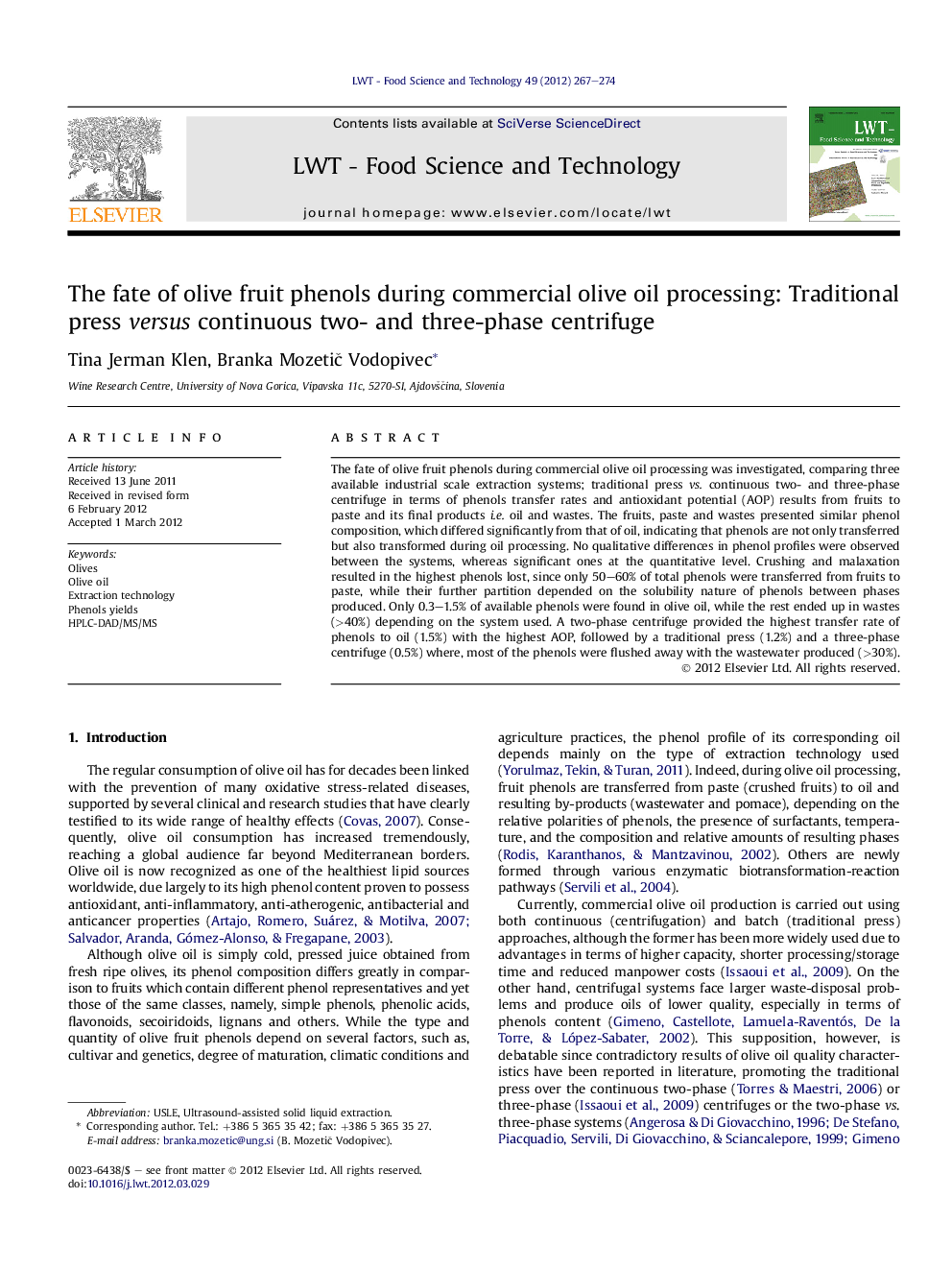| Article ID | Journal | Published Year | Pages | File Type |
|---|---|---|---|---|
| 4563979 | LWT - Food Science and Technology | 2012 | 8 Pages |
The fate of olive fruit phenols during commercial olive oil processing was investigated, comparing three available industrial scale extraction systems; traditional press vs. continuous two- and three-phase centrifuge in terms of phenols transfer rates and antioxidant potential (AOP) results from fruits to paste and its final products i.e. oil and wastes. The fruits, paste and wastes presented similar phenol composition, which differed significantly from that of oil, indicating that phenols are not only transferred but also transformed during oil processing. No qualitative differences in phenol profiles were observed between the systems, whereas significant ones at the quantitative level. Crushing and malaxation resulted in the highest phenols lost, since only 50–60% of total phenols were transferred from fruits to paste, while their further partition depended on the solubility nature of phenols between phases produced. Only 0.3–1.5% of available phenols were found in olive oil, while the rest ended up in wastes (>40%) depending on the system used. A two-phase centrifuge provided the highest transfer rate of phenols to oil (1.5%) with the highest AOP, followed by a traditional press (1.2%) and a three-phase centrifuge (0.5%) where, most of the phenols were flushed away with the wastewater produced (>30%).
►Olive phenols transfer from fruits to oil and by-products was investigated at industrial scale. ► Traditional press vs. continuous two- and three-phase centrifuge extraction systems were compared. ► Crushing and malaxation contributed to 50–60% of total phenols lost. ► Only 0.3–1.5% of initial fruit phenols were transferred to olive oil, while the rests (>40%) ended up in wastes. ► Higher water additions during oil processing were paralleled by a higher phenols lost.
